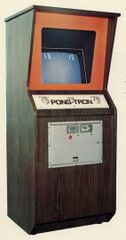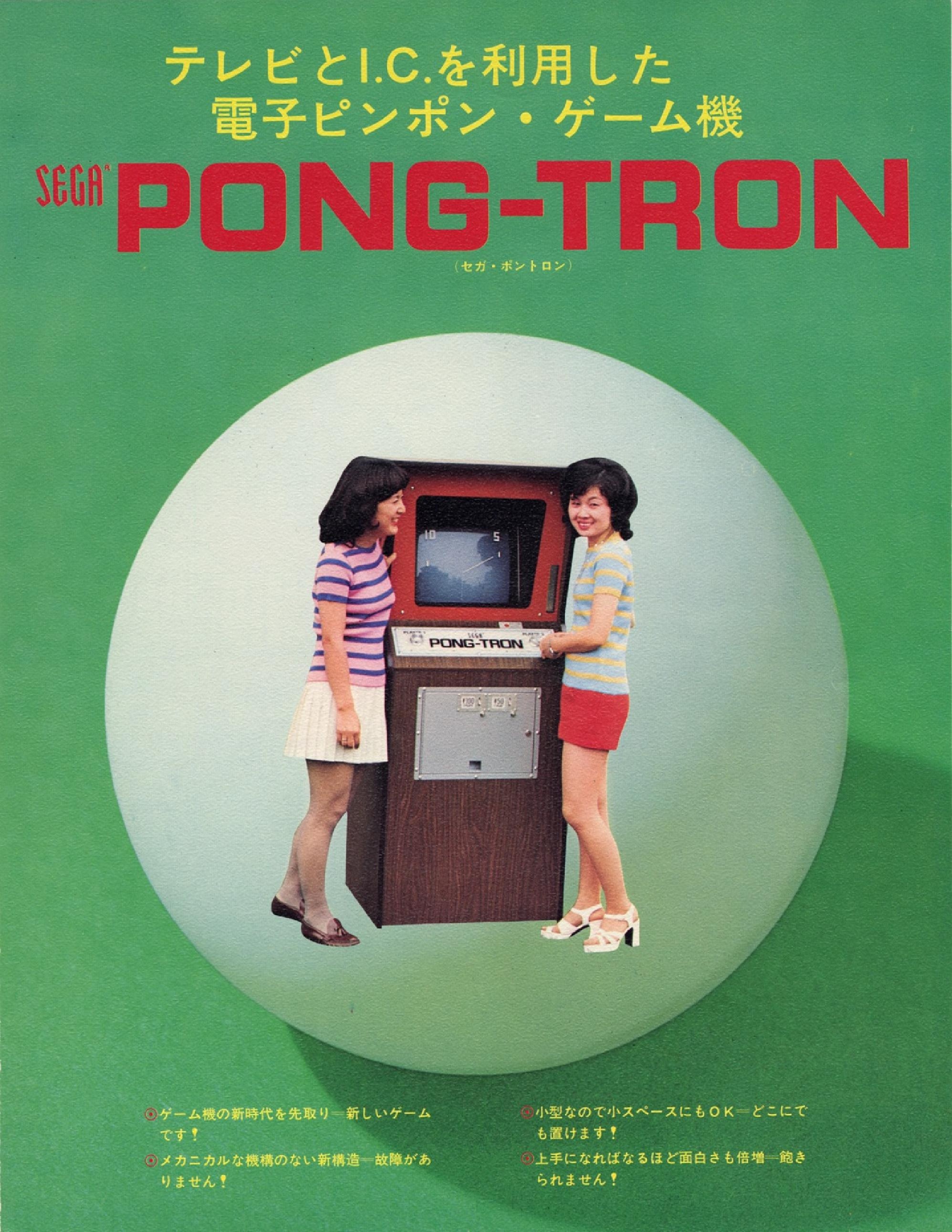Difference between revisions of "Pong-Tron"
From Sega Retro
Scarred Sun (talk | contribs) (I groused about not having a book template but we can always just ReplaceText once a real solution is ironed out.) |
|||
| Line 1: | Line 1: | ||
{{Bob | {{Bob | ||
| − | | | + | | image=PongTron cabinet.jpg |
| publisher=[[Sega]] | | publisher=[[Sega]] | ||
| developer=[[Sega]] | | developer=[[Sega]] | ||
Revision as of 02:15, 30 September 2021

| |||||||||
| Pong-Tron | |||||||||
|---|---|---|---|---|---|---|---|---|---|
| System(s): Discrete logic arcade | |||||||||
| Publisher: Sega | |||||||||
| Developer: Sega | |||||||||
| Genre: Action | |||||||||
| Number of players: 2 | |||||||||
|
This teeny-tiny article needs some work. You can help us by expanding it.
Pong-Tron (ポントロン) is a 1973 discrete logic arcade game produced by Sega. It is a clone of Atari's 1972 game, Pong built specifically for Japanese audiences.
Pong-Tron differs very little from Atari's offering, however this release is significant as it stands as Sega's first arcade game to incorporate a CRT monitor and thus be classed as a "video game". Prior to Pong-Tron's release, Sega had built its successes through electro-mechanical arcade games, pinball tables, slot machines and jukebox distribution.
Pong-Tron followed later in the year by the updated Pong-Tron II (and Hockey TV, another pseudo-Pong clone). The housing was also recycled for Balloon Gun. Sega's main competitor at the time, Taito, also released a similar Japanese clone in the form of Elepong, also in 1973.
Specifications
Dimensions
- Mass: 79kg

